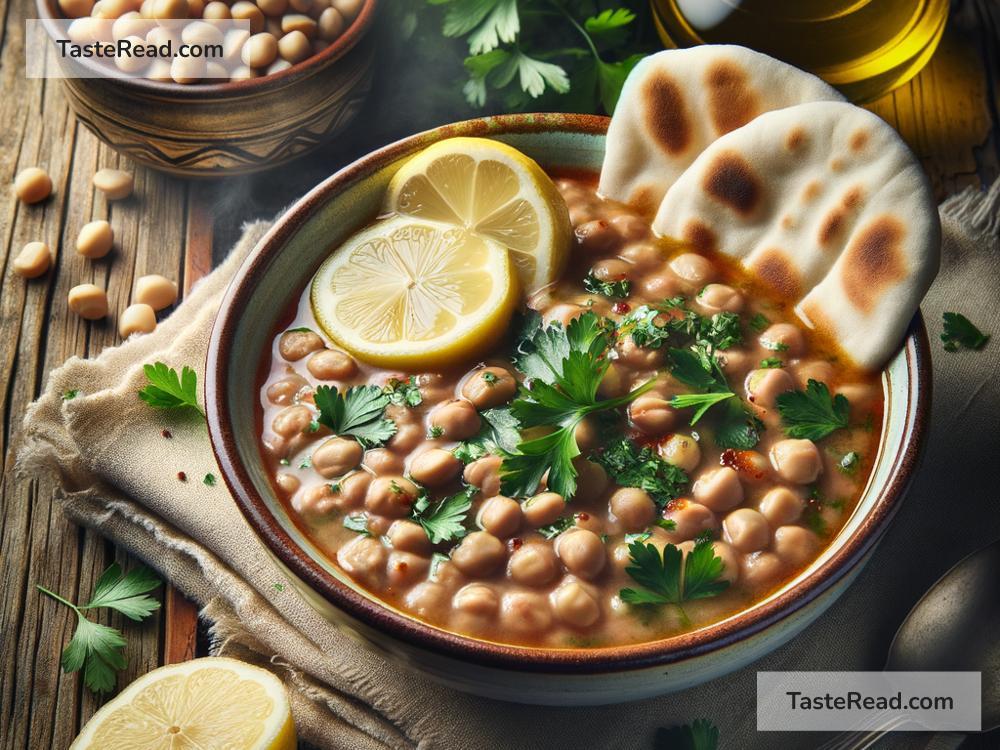Exploring the Origins of the Egyptian Ful Medames
Egypt, a land steeped in history, not only boasts of the monumental pyramids and the mystic Nile but also offers a rich palette of flavors and dishes that are as old as its civilization. Among these, one of the most beloved and ancient dishes is Ful Medames. This traditional dish, consisting mainly of fava beans, has graced Egyptian tables for centuries. Let’s dive into the fascinating origins and journey of Ful Medames, a simple yet substantial dish that has captured the hearts of many.
The Ancient Roots
Ful Medames has a heritage that many believe stretches back to the times of the Pharaohs. The oldest proof we have comes from the remnants found in the tombs of Ancient Egypt, suggesting that fava beans were a staple in the diet of the Egyptians. However, the dish as we know it today, mashed fava beans seasoned with olive oil, lemon juice, and garlic, likely has its roots in the Coptic Christian period in Egypt. The simplicity and affordability of Ful Medames made it a favored choice, especially during times of fasting when meat consumption was restricted.
The Name and Its Significance
The term “Ful Medames” itself has a story to tell. “Ful” means fava beans in Arabic, while “Medames” is believed to originate from the Coptic word for “buried.” This moniker is thought to refer to the original cooking method where fava beans were placed in a pot, buried in hot coals, and left to cook overnight. The result was a rich, flavorful, and hearty dish that provided nourishment for the day ahead.
The practice of slow-cooking the beans not only imparts a distinct depth of flavor but also symbolizes the tradition of communal eating and sharing. In many ways, Ful Medames is not just a dish but a representation of Egyptian culture’s warmth and generosity.
The Dish Today
Today, Ful Medames is recognized as Egypt’s national dish and is enjoyed daily by millions across the nation and beyond. It is commonly served as a breakfast item but can also be found gracing tables at lunch and dinner. The versatility of Ful Medames is one of its outstanding features; it can be enjoyed in its simplest form or embellished with various toppings like chopped tomatoes, boiled eggs, or even pastrami, catering to a wide range of palates.
Street vendors and restaurants alike offer their unique take on the dish, but the essence of Ful Medames remains unchanged – a testament to the enduring appeal of this ancient meal. It’s not just confined to Egypt; the dish has traveled across borders and found a place in the hearts and kitchens of people in the Middle East and around the world, adapting and evolving while retaining its core identity.
Ful Medames and Health
Apart from its rich history and cultural significance, Ful Medames is revered for its health benefits. Fava beans are packed with protein, fiber, vitamins, and minerals, making the dish a nutritional powerhouse. It’s an excellent source of energy and has been linked to various health benefits, including improved digestion and a reduced risk of chronic diseases.
Making Ful Medames at Home
The beauty of Ful Medames lies in its simplicity and the ease with which it can be prepared. At its heart, the dish requires only cooked fava beans, olive oil, lemon juice, garlic, and salt for seasoning. You can soak and cook dry fava beans or, for a quicker version, use canned fava beans. The beans are typically mashed slightly and seasoned to taste, then served warm with a drizzle of olive oil and a squeeze of lemon.
Final Thoughts
Ful Medames is more than just a dish; it’s a window into the rich tapestry of Egyptian history and culture. Its simplicity, nutritional value, and delicious taste have allowed it to stand the test of time, traversing centuries and borders. Whether enjoyed in a bustling Cairo market, at a family gathering, or in the comfort of one’s home, Ful Medames remains a beloved symbol of Egyptian hospitality and heritage.
In exploring the origins of Ful Medames, we uncover not only the roots of a dish but also the essence of a culture that has thrived for millennia. It serves as a reminder that food is more than sustenance; it’s a story, a shared experience that transcends time and place, connecting us to the past, present, and each other.


